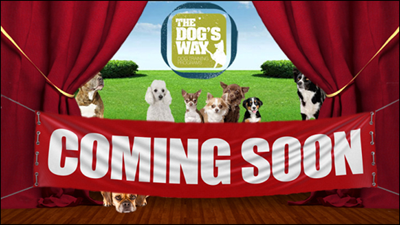BONUS mini-lessons
To start taking The Dog’s Way Video Training Course click the button below:
Based on your suggestions, we’re adding some new mini-lessons for the purposes of helping you deal with some specific scenarios and issues while you go through the course. Our intent is to help you customize your training to suit your situation more specifically. Several of these videos are currently in production and will be available in a couple weeks!
This is an active page that we are adding mini-lesson videos to regularly. If you have ideas or suggestions for mini-lessons that would help you further in your training please email us a suggestion at: suggestions@thedogsway.com
Quick Start Section
Mini Lessons to Use as You’re Just Starting Out (prior to lesson 10)
Two or More Dogs
If you own two or more dogs please watch this video prior to starting your training homework. This video gives you a structure and plan to make training two or more dogs easier and more productive. This lesson ‘add-on’ is the same lesson that you will receive on your introduction DVD once your course arrives. You can choose to watch it on DVD after you get the course, or you can view it online to get a head start.
Young or Shy Dogs
This ‘add-on’ lesson is for people who have a dog between 7 and 11 months old or who have a dog of any age that is more shy and skittish. This ‘add-on’ lesson gives you some ideas about how to add back some of the elements of our young puppy training protocol (used with dogs under 6 months old) to make the start of Lesson One homework easier for you and your dog.

Exercise With Your Dog as You Start The Course
You may recall that Sean suggests taking a break from the ‘off-leash’ park during your first few weeks of training. Sean still highly recommends lots of exercise though and this video goes over some other ideas to help you exercise your dog in the first few weeks of training if you’ve taken a break from the out of control play at the ‘off-leash’ park.

Equipment
In this video, Sean teaches you how to easily measure your dog’s neck and determine the right collar size for your dog. He also goes over the four basic types of collars that he references in the introduction and orientation lesson and gives more guidelines and details about how to fit each of those types of collars.

A Word On Dealing With Your Dog’s Specific Issues
A lot of dog training is very “issue specific”. In this video, Sean highlights his general approach to solving specific behavioral issues. He emphasizes his overall philosophy of first dealing with the “relationship” before moving onto “basic skills” and ultimately “policies” (or default rules). Sean also revisits the practical application of the “progression of difficulty” and talks more specifically how to apply this in problem solving specific behavior issues.
Mini Lessons To Use After Lesson 10
Bathing
In this video lesson, Sean teaches you how to break down your dog’s bath time routine so that you can teach your dog to do each parts of the routine and still keep their nervous system neutral. Even though this may be a top priority on your training list, Sean highly recommends that you go through the basic course up to lesson 10 first to deal with the “relationship” and “basic skills” issues prior to changing the “policy” about bathing with your dog.
Brushing
In this video lesson, Sean gives you a ‘step by step’ training plan to teach your dog that brushing isn’t such a bad thing! As with the Bathing Lesson, please achieve the recommended competency prior to watching and applying this lesson.
Nail Clipping
If you’re tired of the regular wrestling matches that you’ve had with your dog over nail clipping, you’re going to want to watch and apply this lesson. Sean gives you a step by step training plan so you can teach your dog that nail clipping doesn’t have to be a fight! Once again (as you’ve heard Sean say many times), please achieve the pre-requisite competency before applying this lesson.
Lesson 13 : Only Do This After Completing The Course
Lesson 13
In this lesson, Sean adds to the information from Lesson 12. He gives you a step-by step plan to structure meetings between dogs that will help diffuse any over-excitement and give dogs the best chance of getting off to a good start. Please be sure to achieve the competency from Lesson 12 prior to applying this lesson.
